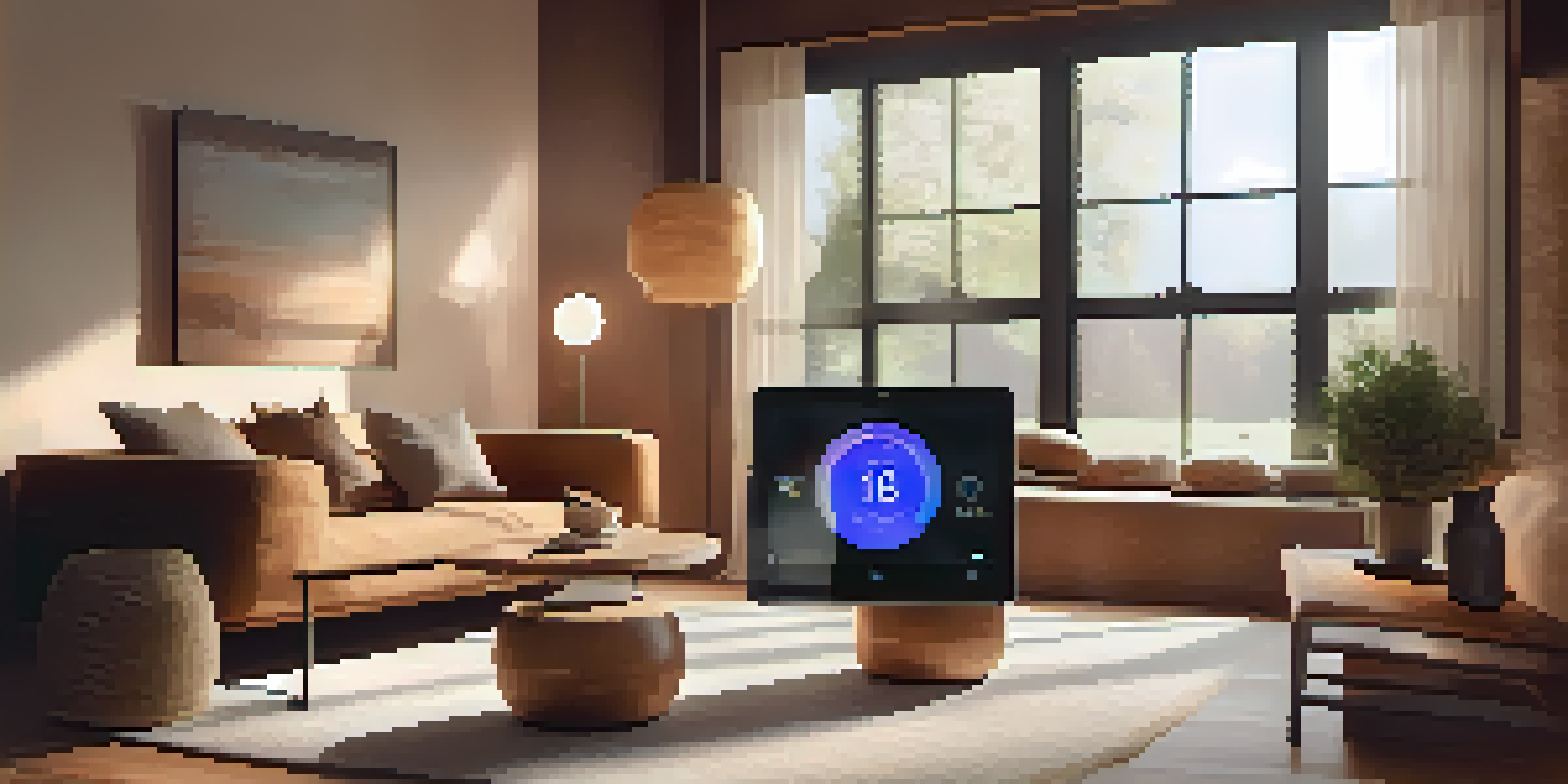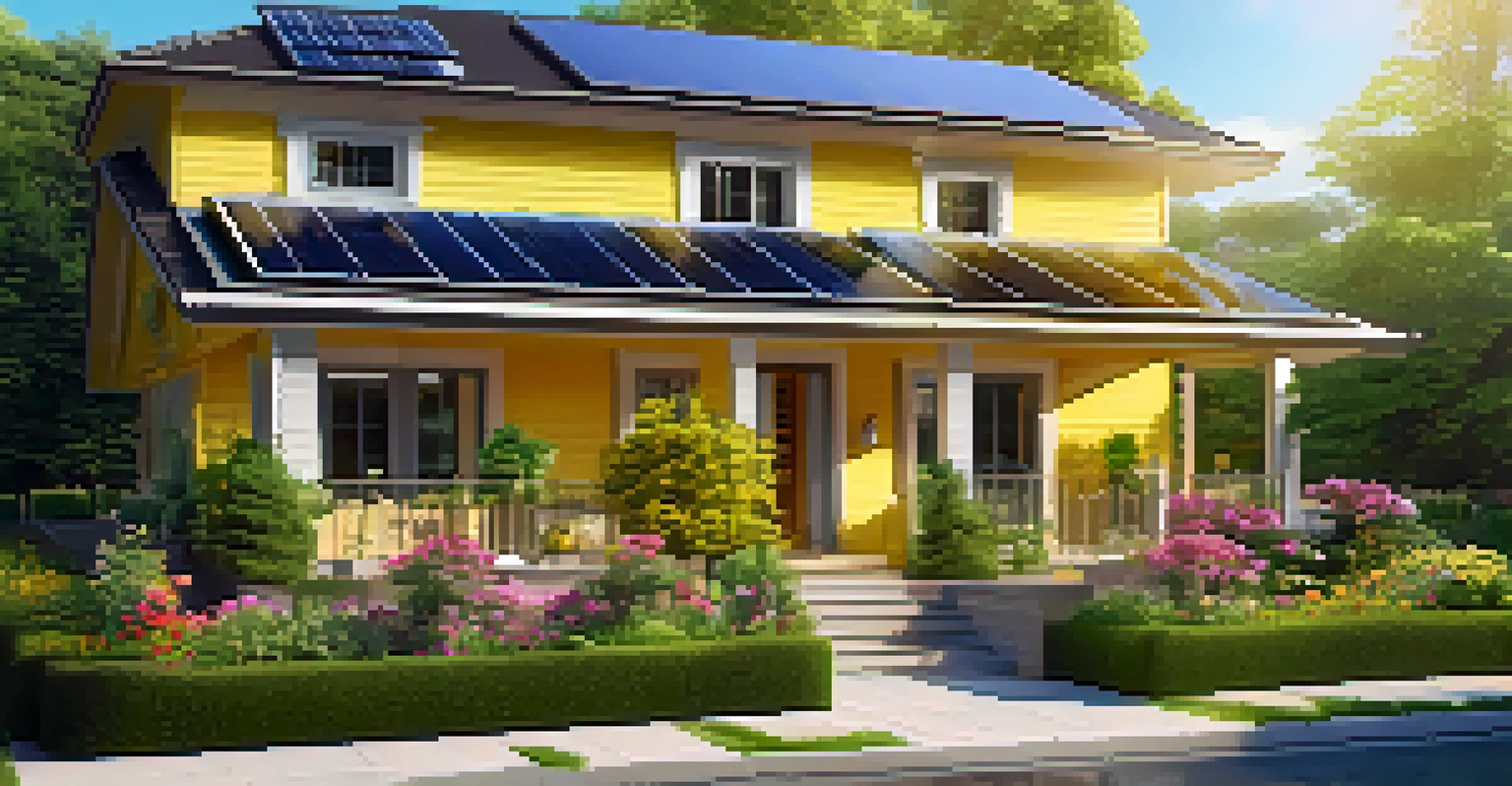Smart Home Features That Reduce Utility Costs

Energy-Efficient Smart Thermostats for Temperature Control
Smart thermostats are like personal assistants for your home's climate. They learn your schedule and adjust temperatures accordingly, ensuring you're never heating or cooling an empty house. For example, if you usually leave for work at 8 AM, a smart thermostat can automatically lower the heat or air conditioning right before you go.
The best way to predict the future is to create it.
By using sensors and algorithms, these devices can optimize energy use, potentially reducing your heating and cooling costs by up to 15%. Plus, many smart thermostats can be controlled via smartphone apps, allowing you to make adjustments remotely. This means you can turn the heat back on just before you arrive home, ensuring a cozy environment without wasting energy.
In addition to energy savings, smart thermostats can provide insightful reports on your energy usage. By monitoring patterns, they help you identify areas where you can further cut costs. It's like having a financial advisor for your energy consumption!
Smart Lighting Solutions That Save Energy and Money
Smart lighting systems are an excellent way to enhance convenience while trimming your utility bills. With the ability to control your lights via apps or voice commands, you can easily switch them off when you leave a room—no more wondering if you left the lights on!

Many smart bulbs also come with scheduling features, allowing you to set them to turn on or off at specific times. For instance, you can program your outdoor lights to only illuminate when it gets dark, reducing energy waste. Plus, smart bulbs typically use LED technology, which is more energy-efficient than traditional incandescent bulbs.
Smart Thermostats Save Energy
These devices learn your schedule and optimize heating and cooling, potentially cutting costs by up to 15%.
Some systems even adjust brightness based on the time of day or occupancy, ensuring that you’re not using more energy than necessary. By making these small changes, you can significantly reduce your lighting costs without sacrificing comfort.
Home Automation for Efficient Energy Management
Home automation systems allow you to control various aspects of your home from one central hub. Imagine having the power to manage your heating, lighting, and appliances all with a few taps on your smartphone. This integration not only enhances convenience but also promotes energy efficiency.
Energy conservation is a national priority, and we should all work together to make it happen.
For example, you can set your system to turn off all devices when you leave home. This means no more phantom energy drain from electronics that are plugged in but not in use. You could also program your appliances to run during off-peak hours when energy costs are lower, further reducing your utility bills.
By automating your home, you can create a more energy-efficient environment while simplifying your daily routine. It’s like having a personal butler to make sure everything runs smoothly and economically!
Smart Appliances That Optimize Energy Usage
Smart appliances are designed to consume less energy while providing the same level of service. For example, smart refrigerators can monitor their own energy use and adjust settings based on the amount of food stored inside. This not only keeps your groceries fresh but also minimizes electricity consumption.
Washing machines and dishwashers equipped with smart technology often have eco-friendly modes that use less water and energy compared to standard cycles. You can even monitor and control these appliances remotely, so you can start a load of laundry while you’re out, ensuring they run during off-peak hours.
Home Automation Boosts Efficiency
Integrating home automation can streamline energy management, reducing waste and simplifying daily routines.
Investing in smart appliances may have a higher upfront cost, but the long-term savings on your utility bills can make it worthwhile. They’re a smart choice for anyone looking to enhance their home’s efficiency.
Energy Monitoring Devices for Real-Time Insights
Energy monitoring devices provide real-time data about your home’s energy consumption. By tracking how much energy each appliance uses, you can identify which devices are the biggest culprits of high bills. It’s like getting a fitness tracker for your home’s energy use!
With this information, you can make informed decisions about which appliances to upgrade or replace. For instance, if your old refrigerator is guzzling energy, it might be time to invest in a more efficient model. Many monitoring systems even send alerts when your usage spikes, helping you catch issues before they become costly.
Not only does this technology empower you to reduce waste, but it also promotes more sustainable living. By understanding your energy habits, you can create a plan that aligns with your budget and environmental goals.
Smart Blinds and Shades for Energy Efficiency
Smart blinds and shades are a stylish way to improve your home’s energy efficiency. By automatically adjusting based on the time of day or the temperature outside, they can help regulate indoor temperatures without relying solely on heating or cooling systems. Imagine waking up to blinds that open gradually with the sunrise, letting natural light in while keeping your home warm.
During the summer, these smart shades can lower themselves to block out harsh sunlight and reduce the need for air conditioning. Conversely, in winter, they can open to allow sunlight to naturally warm your space. This dual functionality can greatly reduce your utility costs year-round.
Renewable Energy Lowers Bills
Installing solar panels allows you to generate your own electricity, significantly decreasing reliance on the grid and utility costs.
Moreover, many smart blinds can be controlled via smartphone apps or voice commands, adding an extra layer of convenience. It’s a small investment that can lead to significant savings!
Smart Home Hubs for Centralized Control
A smart home hub acts as the central command for all your smart devices. With one device, you can control everything from your thermostat to your lights, making it easier to manage your home’s energy use. Think of it as the brain of your smart home, coordinating all systems to work together efficiently.
By using a hub, you can create automation rules that maximize energy savings. For instance, you could set it to turn off the lights and lower the thermostat when you leave for work, all with a single command. This level of integration not only saves you time but also ensures that energy isn’t wasted.

In addition, many hubs provide insights into your energy consumption, allowing you to track savings over time. With such powerful tools at your fingertips, managing your energy use becomes a breeze.
Integrating Renewable Energy Solutions at Home
Integrating renewable energy solutions, such as solar panels, can drastically reduce your utility costs over time. By generating your own electricity, you can minimize reliance on the grid and enjoy significant savings on your energy bills. It’s like having your own personal energy factory right at home!
Many smart home systems can work in tandem with solar panels, allowing you to optimize energy consumption based on real-time production. For example, you can run high-energy appliances when your solar system is producing the most electricity, making the most of your investment.
Additionally, various incentives and tax credits can help offset the initial installation costs of solar energy systems. Combining renewable energy with smart home technology is a powerful way to not only save money but also contribute to a more sustainable future.